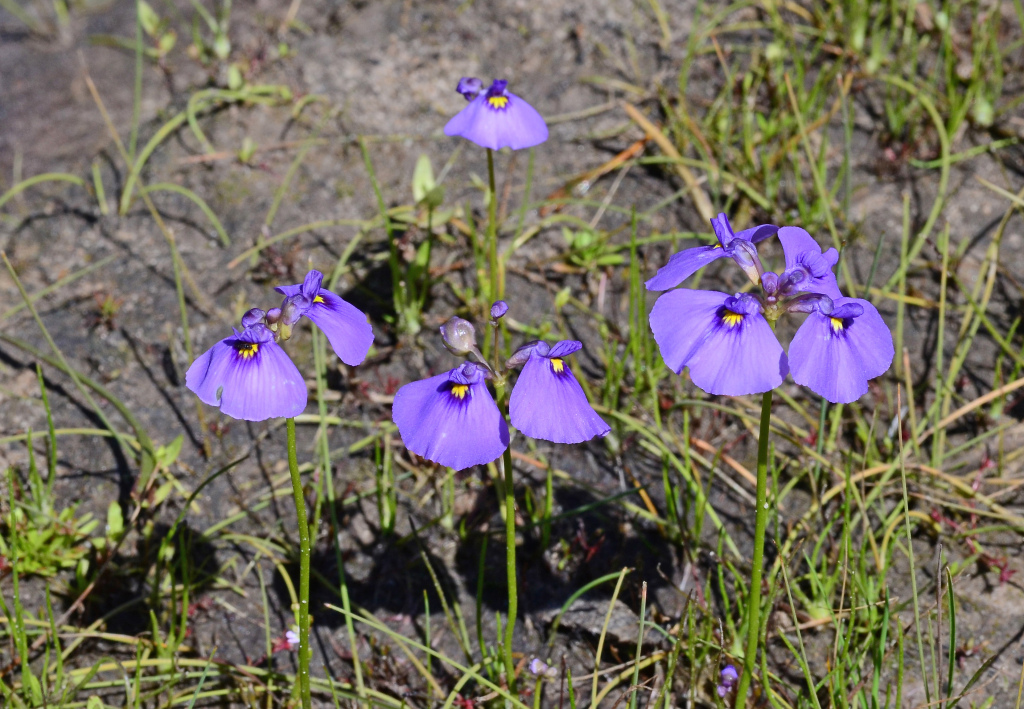Utricularia beaugleholei
R.J.GassinTerrestrial, probably perennial; stolons present. Leaves few, rosetted and on stolons, narrow-lanceolate to narrow-linear, to c. 45 mm long, to c. 1.6 mm wide. Traps few at peduncle base and on stolons, ovoid to globose, 1–4 mm long. Racemes 1–several, erect, 4–35 cm long, mostly 1–10-flowered; sterile bracts absent; fertile bracts basifixed, oblong to ovate, 2–3.5 mm long; bracteoles similar to bracts; calyx-lobes unequal, upper lobe broad-ovate or circular, 2.5–4.5 mm long, lower lobe ovate to broad-ovate, emarginate. Corolla 8–15 mm long, mostly dark violet; upper lip obovate, emarginate; lower lip much larger, hatchet-shaped to reniform, with 4–11 yellow, slightly raised radiating ridges; palate glabrous with pubescent lateral margins; spur cylindric, shorter than lower lip, apex bilobed. Capsule globose, 3–5 mm diam.; seeds narrow-obovoid, c. 0.8 mm long. Flowers Sep.–Mar.
LoM, Wim, GleP, VVP, VRiv, MuF, GipP, OtP, WaP, Gold, CVU, GGr, DunT, NIS, HNF. Also SA, NSW. Scattered through western and northern Victoria, often around swamp margins or in other seasonally wet areas, usually in sandy or clayey soils.
This species was previously included in U. dichotoma but is readily distinguished from that species by a number of features. The upper corolla lip in U. beaugleholei projects well beyond the palate on the lower lip (only slightly beyond in U. dichotoma) and is reflexed by at least 90° (flat in U. dichotoma). In the lower corolla lip of U. beaugleholei the palate is glabrous except for the lateral margins (pubescent in U. dichotoma) and has 4–11 slightly raised ridges (usually 3 sets of ridges markedly raised in U. dichotoma).
Jeanes, J.A. (1999). Lentibulariaceae. In: Walsh, N.G.; Entwisle, T.J., Flora of Victoria Vol. 4, Cornaceae to Asteraceae, pp. 547–553. Inkata Press, Melbourne.
 Spinning
Spinning


